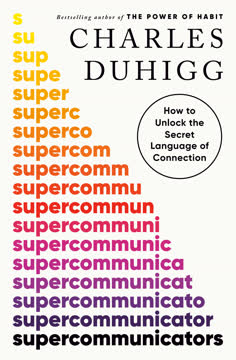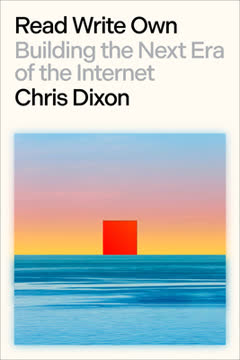重点摘要
1. 通过意外的联系和制造的过程释放创造力
“我常说,创造力就是对周围环境的敏感,并将这些冲动转化为特定的媒介。”
创造力是一种技能。 它可以通过练习和观察来学习和培养。最有创造力的人,如厨师格兰特·阿查茨,从不太可能的来源中找到灵感——从听音乐到观察自然。他们在看似无关的概念之间建立联系,这是一种达芬奇称之为“连接不相关事物”的技巧。
制造创造力。 不要等待灵感的降临,而是创建能够持续产生想法的过程。阿查茨使用一种称为“味道反弹”的技术来创造新菜肴,而编剧亚伦·索尔金则采用结构化的方法来讲故事。通过建立想法生成的系统,即使在没有特别灵感的时候,你也可以创作出富有创造力的作品。
- 在意想不到的地方寻找灵感
- 创建持续产生想法的过程
- 练习在无关概念之间建立联系
- 接受失败作为创造过程的一部分
2. 通过拥抱不适和拟人化痛苦来培养心理韧性
“痛苦开启了心灵中的一扇秘密之门,通向巅峰表现和美丽的宁静。”
拥抱不适。 心理韧性是通过有意寻求挑战性经历来建立的。被称为“最坚强的人”的大卫·戈金斯提倡定期将自己推向超出感知极限的地方。这可能意味着冷水浴、进行高强度的体能锻炼或处理困难的心理任务。
拟人化痛苦。 超耐力运动员如阿米莉亚·布恩和考特尼·道沃尔特已经掌握了重新定义痛苦和不适的艺术。他们不再将痛苦视为敌人,而是视为朋友或向导。这种视角的转变使他们能够在极具挑战的情况下忍受并茁壮成长。
- 定期参与将你推离舒适区的活动
- 发展“制造困难”的实践
- 将痛苦和不适重新定义为成长的工具
- 使用可视化技术为挑战做心理准备
3. 通过信任、有效沟通和持续改进来培养健康的关系
“我们关系的质量决定了我们生活的质量。”
持续建立信任。 信任是所有健康关系的基础,无论是个人还是职业关系。它是通过时间内的一致行动建立的,正如LinkedIn创始人里德·霍夫曼的公式所描述的:信任=一致性+时间。专注于可靠并履行你的承诺。
掌握沟通。 有效的沟通不仅仅是说话——它需要积极倾听和同理心。前FBI谈判专家克里斯·沃斯强调镜像和标记情绪的重要性,以化解冲突并建立融洽关系。在个人关系中,心理学家约翰·戈特曼建议保持5比1的正负互动比例。
- 在所有对话中练习积极倾听和同理心
- 回应伴侣的“连接请求”
- 发展冲突解决和修复策略
- 不断改进你的关系技能
4. 通过关注冲突、意图和在平凡中发现非凡来掌握讲故事的艺术
“伟大的故事发生在那些能讲述它们的人身上。”
关注冲突和意图。 编剧亚伦·索尔金强调,引人入胜的故事围绕着一个想要某物并面临障碍的角色展开。通过清晰定义角色的欲望和他们面临的挑战,你可以创造一个吸引观众的叙述。
在平凡中发现非凡。 记者盖·塔利斯和摄影师布兰登·斯坦顿(纽约人类)通过在看似平凡的情况下发现迷人的故事建立了职业生涯。培养对周围世界的好奇心,并提出探究性问题以发现隐藏的故事。
- 定义角色的欲望和他们面临的障碍
- 使用“但是”、“除非”或“然后”测试来引入冲突
- 练习在日常情况下找到有趣的角度
- 发展你的采访技巧以发现引人入胜的故事
5. 通过倒置金字塔和创建成功系统来有效领导
“你应该倒置金字塔,把自己想象成底部的人。你在那里是为了支持所有正在进行的工作。”
倒置领导金字塔。 Spotify创始人丹尼尔·埃克和餐馆老板丹尼·迈耶提倡自下而上的领导方法。不要把自己看作顶端,而是想象自己在底部,支持和推动团队的工作。这种方法促进创新,并赋予员工对自己想法的所有权。
创建成功系统。 Shopify创始人托比·吕特克强调关注系统而非结果的重要性。通过创建健全的过程和框架,你可以确保一致的结果,并赋予团队独立决策的能力。
- 通过提供资源和支持来赋能团队
- 鼓励各级组织的想法和创新
- 发展能够实现持续成功的系统和过程
- 定期评估和改进你的系统
6. 通过建立能力和接受不确定性来承担计算风险
“恐惧只是缺乏准备的症状。恐惧的最佳解药是能力。”
通过练习建立能力。 宇航员克里斯·哈德菲尔德强调,能力是恐惧的终极解药。通过不断练习和提高你的技能,你会更好地应对挑战并承担计算风险。
接受不确定性。 即使经过充分准备,结果也从未有保证。成功的风险承担者理解这一点,并制定策略来减轻潜在的负面影响,同时保持对机会的开放态度。
- 定期练习和改进你的技能
- 为各种情景做准备,包括最坏的结果
- 区分“可怕的”和“危险的”情况
- 快速做出可逆决策,慎重做出不可逆决策
7. 通过智力谦逊和拒绝盲目信仰来澄清思维
“每个故事都有三个方面:你的、我的和真相。”
培养智力谦逊。 认识到你的信念可能是错误的或不完整的。朱莉娅·加莱夫提倡采用“侦察员心态”——以好奇和开放的态度而非防御性来对待想法。
拒绝盲目信仰。 警惕回音室和群体思维。定期接触多样化的观点并挑战自己的假设。正如投资者查理·芒格所建议的,努力理解反对你立场的最强论点。
- 定期寻找挑战你信念的观点
- 练习钢人化反对论点
- 使用贝叶斯规则根据新证据更新你的信念
- 养成质疑自己假设的习惯
8. 通过对抗孤独和形成情感联系来建立参与的社区
“我们对彼此痛苦的共鸣远胜于对成功的共鸣。”
通过目标对抗孤独。 研究表明,打破慢性孤独循环的最有效方法之一是追求一个比自己更大的目标。参与需要合作和互动的活动。
形成情感联系。 布兰登·斯坦顿的纽约人类项目展示了真实故事在创建社区中的力量。通过分享脆弱、可共鸣的故事,你可以在观众或社区成员之间培养一种联系和归属感。
- 参与服务更大目标的活动
- 分享真实、脆弱的故事以培养联系
- 为社区内有意义的互动创造机会
- 定期认可和庆祝社区成员的贡献
9. 通过优化内容饮食来升级你的思维软件
“谁编写了你脑中的软件?你确定你真的想要它在那里吗?”
进行内容审计。 定期评估你消费的信息。你是在用高质量的内容挑战自己,还是仅仅在强化现有的信念?正如大卫·布鲁克斯所建议的,接触天才有扩展意识的力量。
策划你的信息来源。 积极寻找多样化、高质量的信息来源。创建系统来捕捉和审查有价值的内容,例如使用笔记应用程序或创建个人知识管理系统。
- 定期评估和升级你的信息来源
- 创建捕捉和审查有价值内容的系统
- 寻找挑战你现有信念的内容
- 平衡消费与创作和反思
10. 通过拒绝标签和相信自己来发现隐藏的天才
“首先消除你不是的人,你会发现自己在该在的地方。”
拒绝限制性标签。 社会经常试图将我们分类,但真正的成长来自于挑战这些标签。像重量级冠军弗朗西斯·恩加努一样,认识到你不是由环境或他人的期望所定义的。
相信自己。 成功的人总是对自己的能力进行计算风险。他们理解失败是成长的必要部分,并愿意多次重新开始以实现他们的目标。
- 定期挑战社会标签和期望
- 识别并消除不利于你的行为或信念
- 对自己的能力进行计算风险
- 将挫折视为成长和学习的机会
最后更新日期:
FAQ
What's "Hidden Genius" about?
- Focus on Success: "Hidden Genius" by Polina Marinova Pompliano explores the secret ways of thinking that power the world's most successful people. It delves into the mental frameworks and strategies that distinguish exceptional individuals.
- People-Focused Learning: The book emphasizes learning from the lives and stories of successful people, rather than idolizing them. It suggests that understanding their journeys can help unlock one's own hidden genius.
- Practical Lessons: Through various profiles and stories, the book provides practical lessons on creativity, mental toughness, relationships, leadership, risk-taking, and more.
- Self-Discovery: Ultimately, the book aims to guide readers in discovering their own hidden genius by learning from the successes and failures of others.
Why should I read "Hidden Genius"?
- Inspiration and Motivation: The book offers inspiring stories of individuals who have achieved great success, providing motivation to pursue one's own goals.
- Practical Advice: It provides actionable insights and strategies that can be applied to personal and professional life to enhance creativity, resilience, and leadership skills.
- Self-Improvement: Readers can learn how to overcome challenges, take calculated risks, and build meaningful relationships, all of which contribute to personal growth.
- Unique Perspective: The book's focus on people-focused learning offers a fresh perspective on how to learn from others' experiences without idolizing them.
What are the key takeaways of "Hidden Genius"?
- Creativity is a Skill: Creativity can be learned and developed through practice and by making connections between seemingly unrelated ideas.
- Mental Toughness: Building mental resilience involves embracing discomfort, facing fears, and developing a strong sense of self-accountability.
- Importance of Relationships: Trust and effective communication are crucial for healthy relationships, both personal and professional.
- Leadership and Risk-Taking: Effective leaders empower others and focus on systems rather than outcomes. Taking calculated risks is essential for growth and innovation.
How does "Hidden Genius" define creativity?
- Skill, Not Talent: Creativity is defined as a skill that can be learned and developed, rather than an innate talent or gift.
- Making Connections: It involves generating fresh ideas by making connections between unrelated subjects and seeing the world through a different lens.
- Practical Methods: The book highlights methods like "flavor bouncing" and "connecting the unconnected" as ways to enhance creative thinking.
- Overcoming Failure: Creativity often involves embracing failure as a stepping stone to success, as seen in the stories of successful individuals like Grant Achatz.
What is the "40% Rule" mentioned in "Hidden Genius"?
- Mental Limitation: The "40% Rule" suggests that when you feel exhausted and think you can't go any further, you're likely only 40% done.
- Pushing Limits: This concept encourages pushing beyond perceived limits to achieve greater endurance and resilience.
- David Goggins' Experience: The rule is exemplified by David Goggins, who used it to overcome physical and mental challenges during his journey to becoming a Navy SEAL.
- Application: It can be applied to various aspects of life, encouraging individuals to push through discomfort and achieve more than they initially thought possible.
How does "Hidden Genius" suggest building trust in relationships?
- Consistency and Time: Trust is built through consistent actions over time, leading to a seamless web of deserved trust.
- Compound Interest of Trust: Trust compounds like interest, growing stronger with each positive interaction and consistent behavior.
- Formula for Trust: The book presents a formula: Trust = Consistency + Time, emphasizing the importance of reliability and long-term commitment.
- Practical Examples: It provides examples of how trust is built in both personal and professional relationships, highlighting the importance of mutual respect and understanding.
What is the "inverted pyramid" leadership model in "Hidden Genius"?
- Bottom-Up Approach: The inverted pyramid model suggests that leaders should see themselves at the bottom, supporting and empowering their teams.
- Empowering Employees: This approach encourages leaders to provide resources and support, allowing employees to generate ideas and drive innovation.
- Examples of Success: The book cites examples like Daniel Ek of Spotify, who uses this model to foster creativity and innovation within his organization.
- Servant Leadership: It aligns with the concept of servant leadership, where leaders prioritize the needs of their team and facilitate their success.
How does "Hidden Genius" address risk-taking?
- Calculated Risks: The book emphasizes the importance of taking calculated risks, evaluating potential outcomes, and preparing for uncertainty.
- Risk Technicians: Successful individuals are described as "risk technicians" who assess and mitigate risks while pursuing their goals.
- Frameworks for Decision-Making: It provides frameworks for distinguishing between reversible and irreversible decisions, helping readers make informed choices.
- Learning from Failure: The book highlights the value of learning from failures and using them as opportunities for growth and innovation.
What role does storytelling play in "Hidden Genius"?
- Unreliable Narrator: The book discusses the concept of the unreliable narrator, emphasizing the importance of being aware of how we tell our own stories.
- Conflict and Intent: Effective storytelling involves focusing on conflict and intent, showing what characters want and the obstacles they face.
- Empathy and Perspective: It encourages readers to view their stories from different perspectives, enhancing empathy and understanding.
- Practical Applications: Storytelling techniques are presented as tools for personal growth, professional success, and building connections with others.
How does "Hidden Genius" suggest optimizing your content diet?
- Content Audit: Conducting a content audit involves evaluating the information you consume daily and making conscious choices to improve it.
- Quality Over Quantity: The book emphasizes the importance of consuming high-quality content that challenges and expands your thinking.
- Mental Software: It likens the mind to a computer, suggesting regular updates to your "mental software" by seeking out new and diverse ideas.
- Practical Steps: Readers are encouraged to surround themselves with inspiring content, engage in meaningful conversations, and explore new intellectual territories.
What is the "theory of maximum taste" in "Hidden Genius"?
- Upper Limit of Mind: The theory suggests that a person's mind is defined by the best content it habitually consumes and is capable of consuming.
- Exposure to Genius: Regular exposure to high-quality, thought-provoking content can expand one's consciousness and intellectual capacity.
- Avoiding Mediocrity: The book warns against settling for mediocre content, as it can lower the upper limit of one's mind over time.
- Practical Application: Readers are encouraged to seek out challenging and inspiring content to continually elevate their thinking and creativity.
What are the best quotes from "Hidden Genius" and what do they mean?
- "Success is personal." This quote emphasizes that true success is defined by individual values and goals, rather than societal standards.
- "Creativity is just connecting things." It highlights the idea that creativity involves making connections between seemingly unrelated ideas to generate new insights.
- "Trust compounds." This quote underscores the importance of consistency and reliability in building trust over time, both in personal and professional relationships.
- "You are most powerful when you tie your identity to your own name." It encourages readers to build an identity based on their own values and achievements, rather than external labels or affiliations.
评论
《隐藏的天才》获得了大多数正面评价,读者们称赞其收录的鼓舞人心的故事和成功人士的实用建议。许多人欣赏作者将复杂的理念提炼成可操作的见解的能力。书中涵盖了创造力、心理韧性和有效领导力等主题。一些读者认为这本书对年轻专业人士或寻求个人成长的人特别有用。然而,少数批评者认为内容并非完全原创,对于更有经验的读者来说可能过于肤浅。总体而言,这本书被视为一本引人入胜且易于理解的指南,帮助人们释放自己的潜力。
Similar Books














